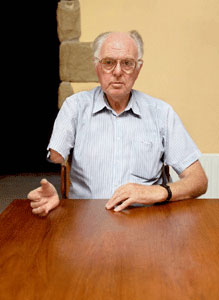Essay 13.3 Phantom Limbs
People who have had limbs amputated often “feel” sensations coming from the missing limbs, a phenomenon known as phantom limbs. Unfortunately, these illusory sensations often include very real pain. The patient may feel stabbing or shooting pains in the phantom limb, or may perceive the phantom limb to be in an uncomfortable position (e.g., a missing arm might be felt as being constantly held behind one’s back), from which they cannot extract it.
At the same time, amputees fitted with prosthetic limbs may have to experience phantom limbs in order to successfully use their prostheses. Apparently in these cases the sense of a phantom limb helps the patient integrate the artificial limb into their internal representation of their body.

See the links below for more information on phantom limbs (a Google search will reveal many more):
Links
From Ramachandran’s Notebook Neuroscientist V. S. Ramachandran’s fascinating account of a number of case studies involving phantom limbs. Case 6 on this site describes an experiment in which you can try to experience something akin to a phantom limb yourself.
Phantom limb pain Short essay on phantom limb pain by neurologist Jonathan Cole (see the Living Without Kinesthesis essay).
Phantom Limbs: The Ramachandran Method This page is for practitioners of “neurolinguistic programming,” which might sound a bit odd but the information is fascinating. Versions of the mirror box described and pictured are now regularly used by neurologists.